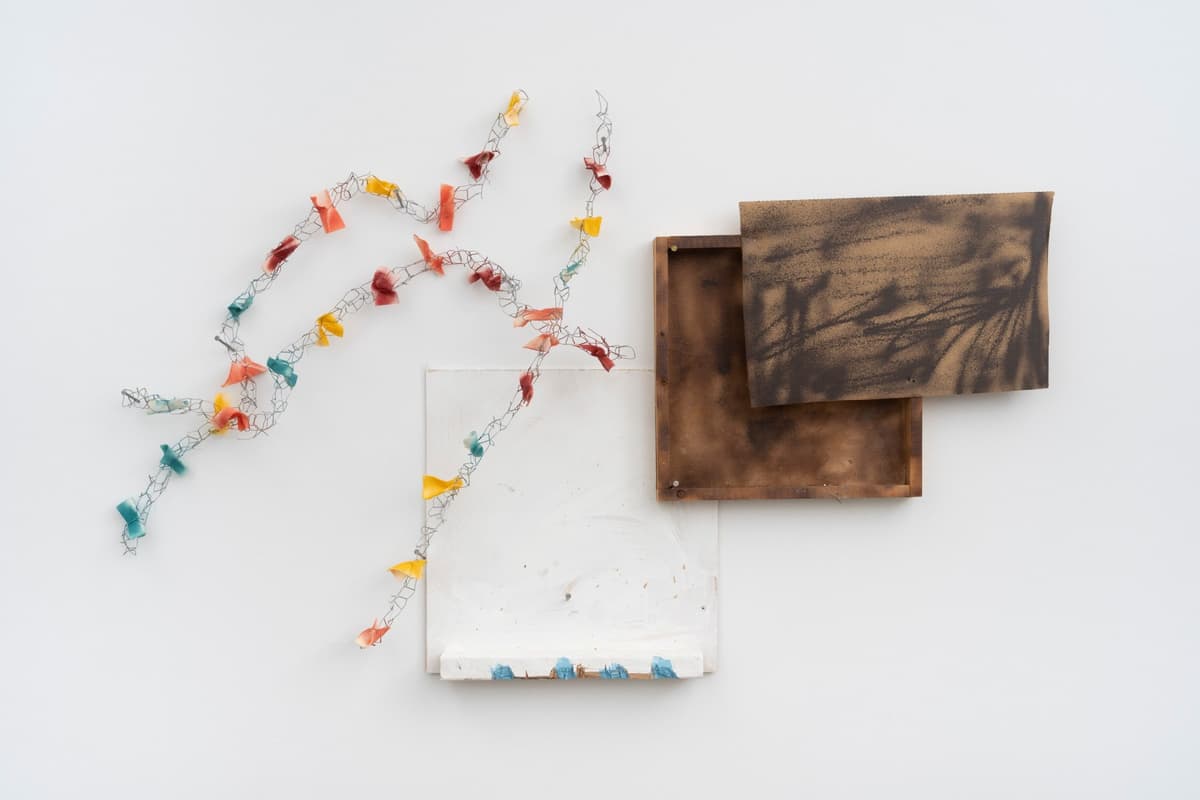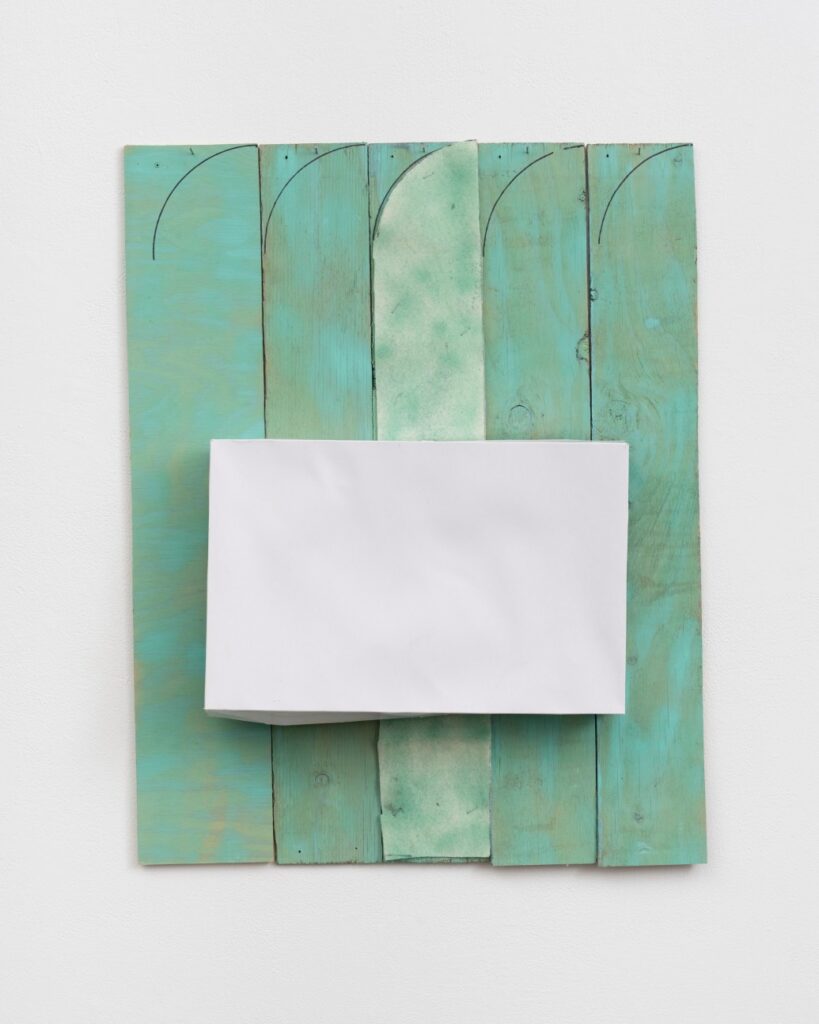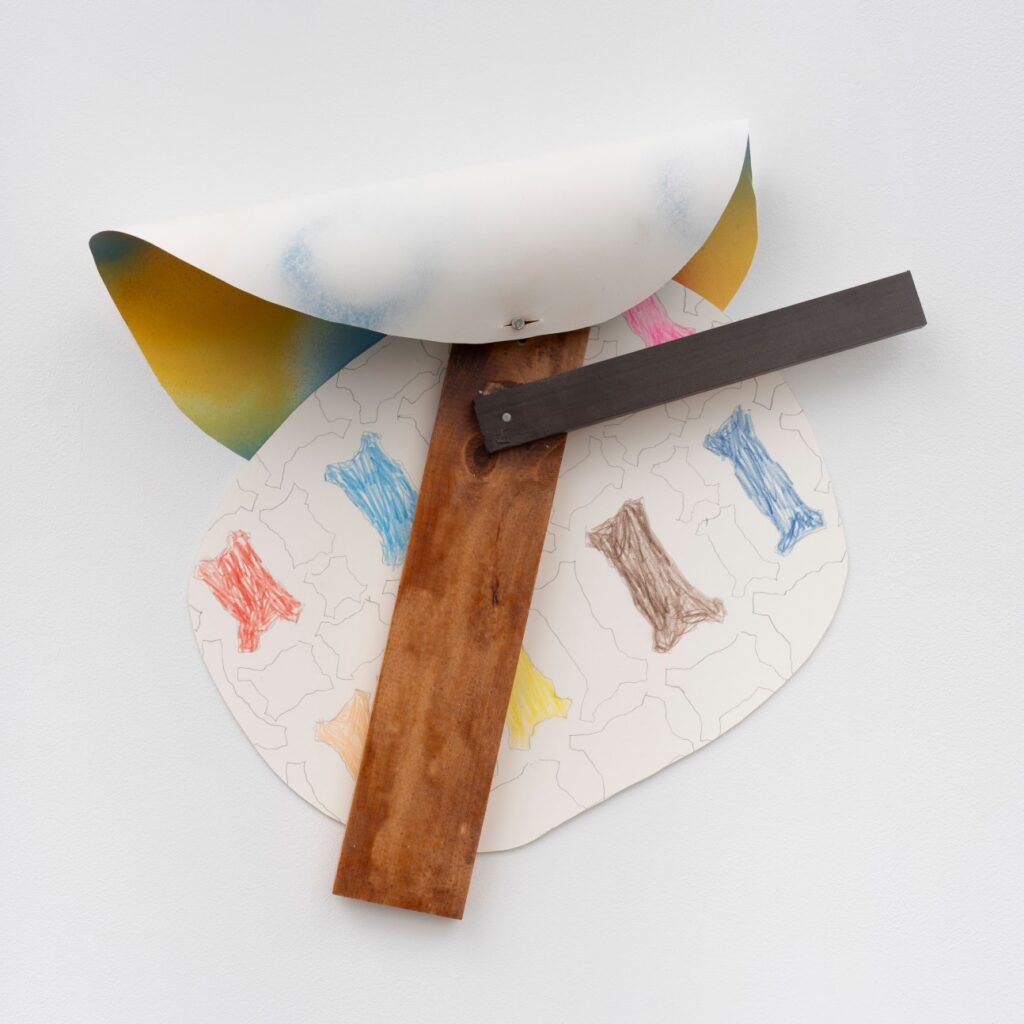Richard Tuttle, Celebrated for His Achingly Spare Compositions, Offers Bolder Investigations in His ‘Prong’ Series
Tuttle’s body of sculpture and painting is part of an ongoing improvisational fugue started in the 1960s.

‘Richard Tuttle: A Distance From This’
125 Newbury 395 Broadway, NY, NY
September 13 – October 26
There is Wabi Sabi, and then there is Richard Tuttle. An artist celebrated over his 50-year career for achingly spare compositions — sometimes consisting of no more than a piece of found wood — he has stood out for his uncanny ability to make impactful works out of materials that are barely present.
With his infinitely subtle, almost surgical eye, he manages to collapse the boundary between abject and precious material, between natural and manufactured form. Bits of wire, Styrofoam, cardboard, and wood, often with hints or light washes of color, are salvaged and combined in unexpected, startlingly pleasing ways. He opens tonight at 125 Newbury for the presentation of new works created over the last year.
Mr. Tuttle’s body of sculpture and painting is part of an ongoing improvisational fugue started in the 1960s and continuing into the present with each work inspiring the next. This series, called the Prong series, seems to be a bolder investigation made from mixed mediums he refuses to classify, settling instead on the broad designation “drawing.” Mr. Tuttle’s works encompass drawing, sure, but also painting, sculpture, assemblage, and sculpture. Like his work, he is unique.
To this end, the mixed media assemblage “Prong 25” manages to be a painting and sculpture all at once. Three twists of wire are festooned with bits of aqua, orange, and ochre tape, fairly flying from the wall like a colorful string of flags. They float above a white painted wooden square, offset by two other smudged coffee-colored shapes, one square one rectangular.
Four small ticks of blue at the bottom of the white square echo the colorful pieces of tape, a succinct compositional echo. It’s an ambitious assemblage that once again shows off his virtuosic ability to pull off a lyrical conversation of line, color, and form without a whisker of excess.

Prong number 9 is truer to his earlier work. A carboard box lid sprayed a marvelously textured aqua has a repeated motif of arcs and lines, rendered in marker. A single rectangle of white felt is attached to the middle. Once again there is a pleasing sense of compositional balance and a feeling for not only color but texture.
Mr. Tuttle is always engaged with every surface and sense of his materials. The middle motif is painted a slightly fainter white, once again creating tension with the felt square. Are they related? Mr. Tuttle makes you question the essential elements of visual experience in a way that takes you with him as a companion.

“Prong 24” is almost a radical departure in that Mr. Tuttle introduces a curved element, a round piece of paper arched backwards and affixed against the wall. We see the blank side of the oval facing us, but its surface is painted with spots of yellow, green, and blue.
Another paper oval, traced with a faint and colorful geometric motif, is nailed in front of it. Affixed to it are two stained pieces of wood, almost like the offset hand of a clock. It’s the least minimal of the works in the show, with a geometric boldness more city in feel. The visual cacophony and energy fairly bangs around its combined elements.
Inspired by a recent trip to Guatemala, these recent works do generally seem more maximalist compared to his previous work. Yet he never fails to make the lines and planes of his composition fairly sing, offset by bright dashes of color and unexpected figure ground relationships.
Mr. Tuttle has mastered the vocabulary and syntax of high modernist form, but renders it with a looseness much more indebted to intuition than formalism. Extreme subtlety and playfulness are the order of the day.
There is also a purely American warmth in Mr. Tuttle’s work that seems to spring out from his love of the natural world. It has a purity and simplicity that some have even deigned to call spiritual. He doesn’t object.
Mr. Tuttle has always been resolutely focused on the moment of wonder that strikes a person in the moment of perception, the “aha” that occurs before something seen can even be named in the mind.
In that way he echoes the famous dictum of Robert Irwin, “Seeing is forgetting the name of the thing one sees.” Mr. Tuttle has shown again and again in his long career that materials come and go, but the primacy of art resides in the fully realized and questing eye.

